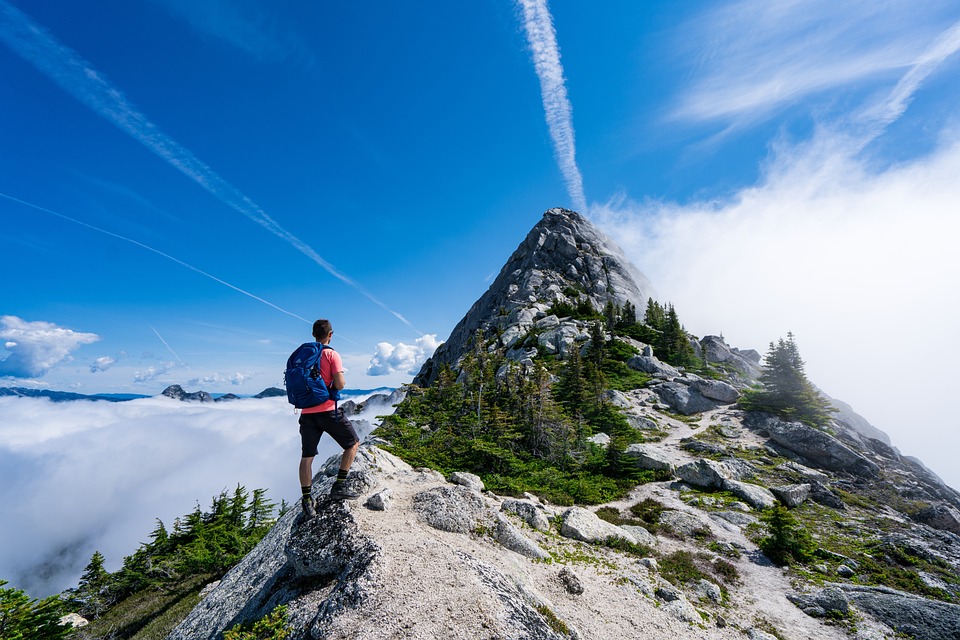Family camping tents come in many shapes and sizes. The person who fits your needs may not be the right person for someone else. This is why there is such a wide variety being produced for the outdoor enthusiast market.
-
Shape your tent options
Tents come in four basic shapes: A-frame, canopy, geodesic or “dome,” and wall. An A-frame is the traditional, old-fashioned “puppy” tent shape, but it can also be quite large. The awning is a popular family tent, with plenty of standing space, including large windows and a rain fly. The geodesic dome has many variations, with different combinations of connected triangles. A wall tent is similar to an A-frame tent, but is generally much larger and has vertical side walls, and is commonly used in Army applications and Scout camps (these are usually set up on permanent roofs).
Square shaped tents are most efficient when making sleeping arrangements and gear. If you decide to purchase a tent with a round or oval floor, you should plan for some extra floor space to compensate for the less efficient layout.
-
Size matters
Tents are marketed as two-man, four-man, six-man, etc. At best, this describes most people you can cram into a tent to sleep in, with no storage for any of your personal items. This sizing limitation is fine for light packers, but doesn’t make much sense for the average camper.
Why are shoehorns put in your tent? Consider using the tent at half its rated capacity and you should have enough space for two adults and most of their gear. Each person must have at least 24 square feet of floor space; Enough space for your pillow, sleeping bag and gear. If you are packing for a long trip, you may want to increase the square footage depending on the amount of gear you will be bringing.
Don’t forget to buy a tent that will be wide/long enough to stretch out when you sleep…leave yourself at least 1 foot of space. You will need at least 30 inches of space across the tent per sleeping bag just to sleep.
Adding “dry” storage for your gear, and enough space to get out of your tent without tripping over a tent buddy, will make for a more enjoyable outdoor experience. With that in mind, an 8′ x 8′ tent will work well as a two-person family tent. This gives each camper 32 square feet to spread out their gear and sleeping area. But, a 10×10 tent is much more suitable for two adults (seems like an exaggeration, right?). This size tent will have enough space for an air mattress, cribs, or pads and still have enough room to stand when changing clothes.
Be careful about purchasing a tent larger than 10″ x 10″. First, finding a suitable place to display such a large item will be a challenge. You need to spot as level as possible. Secondly, the big tents are very heavy and bulky to carry around. Finally, it may be best to have several smaller tents so that not everyone shares the same sleeping, changing, and living area.
Peak height is very important for your comfort. On most trips, try to have a tent tall enough to stand in. Plan for the tallest people in your group. A peak height of six or seven feet is necessary for adults, and a peak of four feet is appropriate for children. Remember that the tent slopes down at an acute angle, so the actual spot you can stand on will be small. Larger spaces will be provided in tents with higher peaks.
Kids can fit comfortably in the smaller tents. Once they’re old enough, around seven or eight, they’ll probably want to sleep in a separate tent anyway. Parents will appreciate the privacy this arrangement provides, too. A five by seven foot tent is suitable for the youth type. Teenagers must be considered adults when setting up the tent.
-
Support your local tent – poles
The poles included with most tents available today are made of aluminum or fiberglass. The better quality tents usually come with specially made aluminum poles, with a high degree of flexibility. Fiberglass poles are included in most “everyday” camping tents. The poles are usually joined together with a flexible shock cord. This speeds up the setup process (important when doing this in the rain!). The poles, when mishandled can bend or break, so many tent manufacturers provide repair kits for you to carry with you on the trip.
-
Layering for me is important
Seams shall be reinforced with nylon tape and double stitching. Tape is stitched at each seam, which reinforces the seam and increases weather resistance. All watertight seams on the fly and floor (or trough), are usually factory waterproofed with a sealant. Set up the tent in your yard before the first use of the tent to test the installation process. You can also take this opportunity to go to your local sporting goods store to buy some sealant and a waterproofing spray. It is always a good idea to do this to ensure a dry ride. Be sure to let the tent dry before packing it back up.
-
fabric
Almost all modern tents are made of nylon. Coated nylon is used for waterproofing. Nylon mesh is used for the inner walls and gear pockets. No-see-um mesh is used for window screens. Better tents use thicker webbing and rip-stop fabric.
-
Hey!!! zip it up!!
Make sure when you go out to buy your tent… test the zipper. It should open and close easily and should not stick to the tent fabric. Fasteners must be rust resistant.
-
Hot and cold flashes and “Why is my tent shaking?”
The vagaries of the weather will put a lot of demands on your tent.
Strong weather conditions will require strong poles, stakes and anchor ropes. Dome tents perform extremely well in the wind. Its rounded design reduces wind impact, and its pole arrangement provides great strength.
Rain causes two problems on the roof. Keeping yourself and your gear dry is first and foremost. Secondly, you need enough room for all of the tent occupants to be comfortable if “battering the storm” becomes necessary.
The floor should be made of a waterproof coated nylon floor covering, flipping sides for about six inches, creating a trough. There should be a minimum of seam (the higher the possibility of leakage). It will prevent water flowing down and under the tent.
Make sure your tent has a waterproof rain fly made of coated nylon. The fly should wrap around the tent and run down the sides, leaving only a few inches of space between it and the ground. This should prevent rain, even in windy conditions. The fly has to extend far enough over the door so it keeps out rain when you open the door to enter or leave. Some tents come with a vestibule that allows this.
Sunlight and the accompanying heat create a great need for shade and airflow. The rain fly will provide shade. Glass windows on opposite sides of the tent, or a louvered window opposite a closed door, will allow air to flow through the tent.
Longer cold-weather treks require a special heavy-duty 4-season tent. Unless you plan to do winter camping, you can use the “three seasons” tent which has the above features. The most important features will be a rain fly that covers the entire top and sides to keep snow and other rain at bay, and an inner layer made of open mesh fabric to allow water vapor to breathe out of the tent. In cooler weather, water vapor inside the tent from the moist outside air and exhaled by the occupants condenses on the inner surface of the tent. This can be prevented by allowing air to flow through your tent or to pass through the netting.
Tent size is also a consideration in cold weather camping. The smaller tent will stay warmer than the large tent with your body heat.
-
You get what you pay for
More expensive tents are usually made with stronger fabrics, poles, and stitching. They are built to withstand stronger winds and more violent rains. A good tent, which is well taken care of, can last for many years.
Remember that not everyone will need this much sturdiness. The milder the weather and the closer to the house you live in, the better solution will likely be tents that are less expensive.
If you’re just starting your camping trip, and don’t know if you’ll enjoy it, you might want to start with a less expensive setup. Your first trips will likely be when the weather is warmer, and you probably won’t venture deep into the wilderness until you’ve gained some experience and decided whether or not you like camping. Remember, you can always upgrade your equipment later.
For more information you can visit us at Birdseye exterior view Where you can find more tips to help you with your camping needs.










